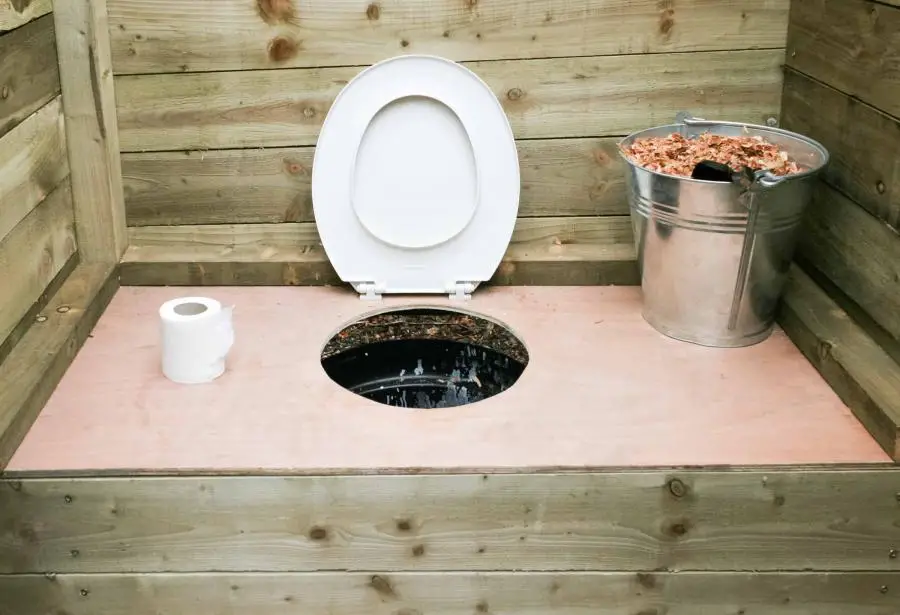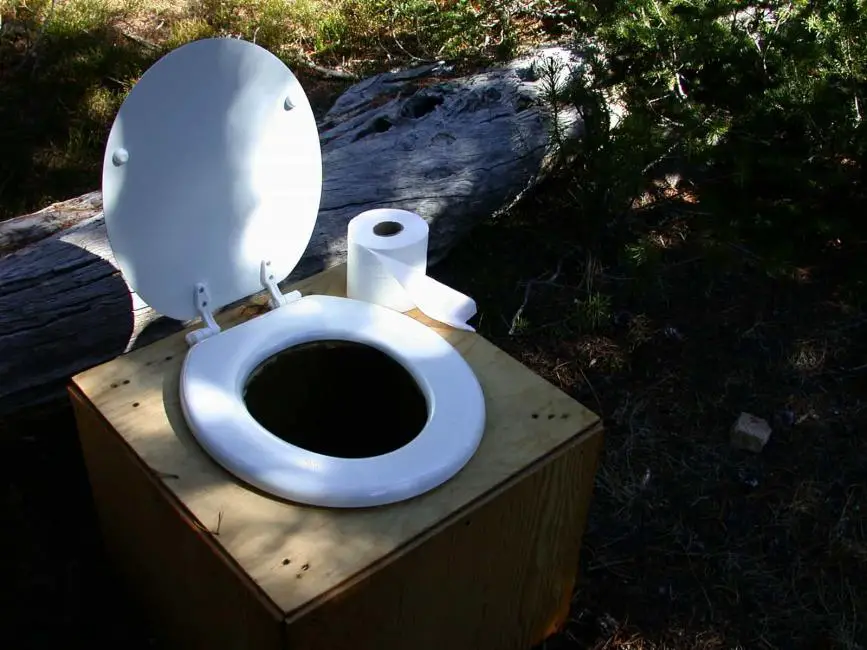When I first invested in a composting toilet, like most, I was wondering what to do with my used toilet paper. Can I flush this? What if it doesn’t break down? What if it breaks something?!
The last thing I’d want to do is have to get messy fixing a problem that could’ve been completely avoided (yuk).
Anyway, you’re here because you’re wondering: can you put toilet paper in a composting toilet? Yes, you can put toilet paper in a composting toilet. Some toilet papers will break down much faster than others, depending on the materials used, how thick the paper is, the ply, and whether any dyes or inks were used. For best results, opt for marine or RV rated toilet paper.
The Best Toilet Paper For Composting Toilets
For best results, I recommend using a “Marine/RV” toilet paper such as Freedom Living Toilet Paper (link to Amazon). The toilet paper is specifically designed to break down quickly, meaning you won’t find it lingering in your composting toilet tank for years to come.

Factors affecting toilet paper compostability
To suit modern flushable toilets, toilet paper is designed to break down when it touches water. But, what about when you’re using a waterless system such as a chemical or composting toilet?
The good news is that toilet paper, as with paper in general, is compostable so you can still use it. It’s a natural material that will break down given enough time and the right conditions.
The bad news is that the time the toilet paper takes to break down can vary substantially based on a number of factors. I’ve outlined the main factors that affect the decomposition process below to help you decide what type of toilet paper is best to use for your specific toilet system.
Materials
Toilet paper can be made from a number of different materials, including:
- Virgin wood fibers (aka trees)
- Recycled materials such as paper and newspaper
- Bamboo
- Sugarcane
In addition to these ‘base’ materials, a number of other ingredients are needed to give the toilet paper the strength and color you’re used to. These range from chemical sulfates to aid in the eventual break down of the paper, to bleaches such as chlorine dioxide, sodium hydroxide, and peroxide to name but a few.
As may have guessed by now, some of the above ingredients are extremely harmful to the environment, as well as having an impact on the biodegradability of the finished toilet tissue.
For example, recycled toilet paper is made of weaker fibers than virgin toilet paper so will decompose faster.
Ply
The ‘ply’ of a toilet paper equates to how many layers are used to produce the final product. 1 ply is the most basic single-layer toilet paper, whereas some more luxurious brands now use up to 3 ply paper.
1 ply paper will break down significantly faster than a 3 ply paper. This is simply because there’s a lot more paper to break down on a 3 ply tissue.
However, I wouldn’t expect it to take 3x longer for a 3 ply paper to break down in your composting toilet, because
- most people end up using more 1 ply paper to make up for its delicateness
- 1 ply paper is typically thicker per ply than 2 ply or 3 ply paper (but not always, this varies by brand)
If you can handle the relative fragility of 1 ply paper, this is the best option for composting toilets as it will break down faster than higher ply papers.
Thickness
The thicker the paper, the longer it’ll take to break down. Typically, 1 ply paper is made of 13 thickness paper, and 2 ply is made from 2 sheets of 10 thickness paper.
Dyes/inks
Have you ever wondered how or why the toilet paper you’re used to seeing is such a crisp clean white? Well, the ‘how’ is down to chemical bleaching processes such as those using chlorine dioxide as mentioned above.
The ‘why’ is a bit more complex, as on face value it would cost the manufacturers less to not have to bleach the paper, whilst at the same time being better for the environment. Sadly we have collectively become accustomed to associating the color white with cleanliness and therefore white toilet paper just sells better.
Anyway, certain dyes and/or bleaches aren’t compostable. Or just compost extremely slowly. If you want your toilet paper to break down alongside your poop and don’t want to worry about uncomposted remains, go for an unbleached toilet paper.
You can get toilet papers bleached using eco-friendly methods, but you’ll have to check the packaging carefully before you buy.

The best toilet paper for composting toilets
The best toilet paper for composting toilets is Freedom Living Toilet Tissue. I recommend this one primarily for how quickly it breaks down. It’s also eco-friendly, avoiding the nasty chemicals mentioned above in the bleaching process.
If that one doesn’t work for you there are plenty of other options. Experiment with your toilet paper of choice in small quantities first and monitor how quickly it degrades.
The more you use your composting toilet, the more you’ll want to invest in a “RV/Marine” toilet paper such as the one I’ve recommended above. Toilet papers marketed for RVs and boats all tend to have a common goal: being able to degrade quickly, whether in a composting or chemical system.
If, like me, you’re quite eco-conscious, I highly recommend checking out my guide on the best eco-friendly toilet papers.
Reduce your toilet paper usage by using a bidet
The more toilet paper you use… Well, the more build-up you’ll be dealing with in your composting toilet tank. An ingenious way to use less toilet paper is by using a bidet.
You might be thinking, well duh, but they need to be plumbed in… After all, this article is about waterless and composting toilets. However, you may not realize that there’s a wide range of bidets that can easily be used with a composting toilet.
I’ve been using this Brondell GoSpa for over a year now, and it’s not failed me yet. If using a portable bidet sounds like something you’d be interested in, don’t forget to check out my article on the best portable bidets for a load more in-depth information.
Frequently Asked Questions
Below are some of the most common questions I get asked that relate to composting toilets and what you can dispose of in them.
If you don’t find the answer to your question below, feel free to get in touch and I’ll do my best to help out.
Where do you put the toilet paper in a composting toilet?
If the toilet has two separate holes for urine and solids, place the toilet paper in with the solids.
Can you dispose of tampons in a composting toilet?
However, if you’re certain your tampons don’t contain any plastics or other non-compostable materials, they’re safe to dispose of with your composting toilet waste. Caution is advised if you are unsure.
Is there a limit on how much toilet paper I can put in a composting toilet?
Can you put wet wipes in a composting toilet?
However, wipes made from 100% natural materials like bamboo or cotton can put in your composting toilet. Check the label before you buy and make sure the wipes are suitable for home composting and not just industrial composting.
If the wipes are only compostable in industrial facilities, they need specific conditions to break down. A composting toilet won’t provide these conditions.
